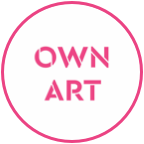Our most complex and emotionally loaded sense, touch forms the basis of almost every single interaction and relationship we experience. It also happens to be banned.
The Fitzwilliam Museum in Cambridge (A rather brilliant, iconic institution full of lovely people) has been working throughout 2020 to bring together an incredible showcase of pieces that span over 4000 years and all across the globe exploring the concept of ‘touch’. From anatomy and our skin to the differences between idealogical and physical desire, lead curators Elenor Ling and Suzanne Reynolds leave no stone unturned in their quest to explore our basest and most illuminating sense.
So, we’ve teamed up with the excellent people over at the Fitzwilliam and acclaimed street artist RUN to create a series of large scale installations all about touch! The perfect fit for a project like this, RUN’s bold and unconventional style focuses heavily on the interaction of its subjects, and through his deep understanding of composition and texture distills the very nature of touch and contact into his murals. Having painted one mural inside the museum itself, RUN is now working on a 40ft tall outdoor piece nearby as a companion. In between brush strokes, we chatted to RUN about his process, the exhibition and a little about his rap tastes…
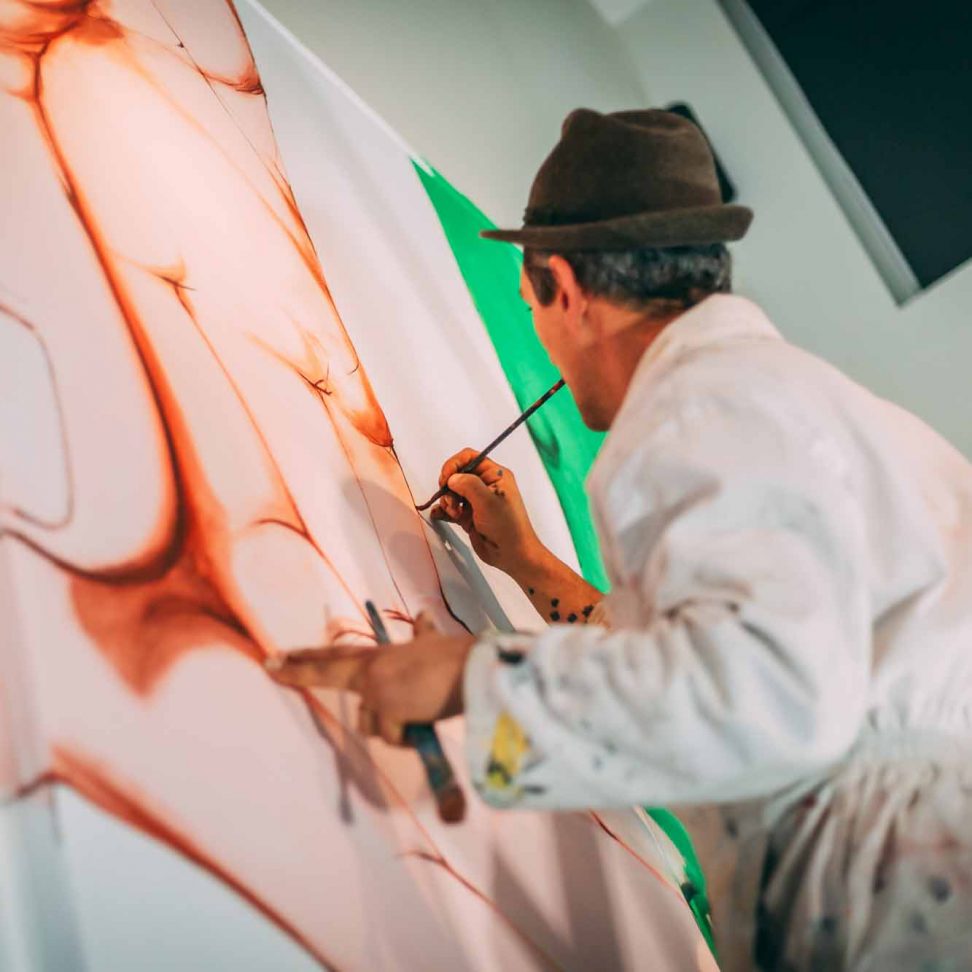

RUN working on his interior mural inside the Fitzwilliam Museum, 2020. Image: Paul Gonella // Strong Island Media
The Human Touch explores the fundamental role of touch in the human experience, creativity, and society. A theme which is even more potent as we live through a global pandemic that has limited and changed the way we exercise our use of touch. How does your work explore the theme of touch?
R: The works aim to frame the image of hands, isolating and analysing them, on a white blank background. I wanted to create a strong image that explores the hands in their natural form, their movements and shape, and put them in front of the viewer as bare and as true as they are. The touch of the hand is the first thing we offer to another person to establish a contact. They are our extension to the world to create, to represent, and to communicate.
What was the catalyst for starting graffiti painting on lorries, trains and walls as a boy ?
R: As a boy I wanted to feel the rush of something that was prohibited, that was what graffiti had to offer. No different from many other boys or girls, I wanted to be known, and I wanted to do it through art. Graffiti is an art movement that didn’t start from art schools or art academies, it’s generated by boys and girls in a very self taught way, and is a result of the progression of many other cultures put together. I abandoned graffiti very early because there was too much competition and I didn’t necessarily enjoy the tools and the narrative of it. What I kept of that culture is the creation of art in the public space. That still gives me the rush and enjoyment of making something that doesn’t belong to me after it has been created. It belongs to everyone.
“The touch of the hand is the first thing we offer to another person to establish a contact. They are our extension to the world to create, to represent, and to communicate.”
RUN, 2020
Your artist name, RUN, is inspired by a Cypress Hill song , how does this relate to your art?
R: I chose Run as my artist name when I was very young, I don’t remember exactly why. Many songs of many artists say that word, and I do love rap. But I am not sure any more where it comes from. All I know is I always liked those 3 letters. It’s a powerful word with many meanings, all signifying movement, strength and unavoidable collision with something that is coming in the future. Or something like that, unless you stop running.
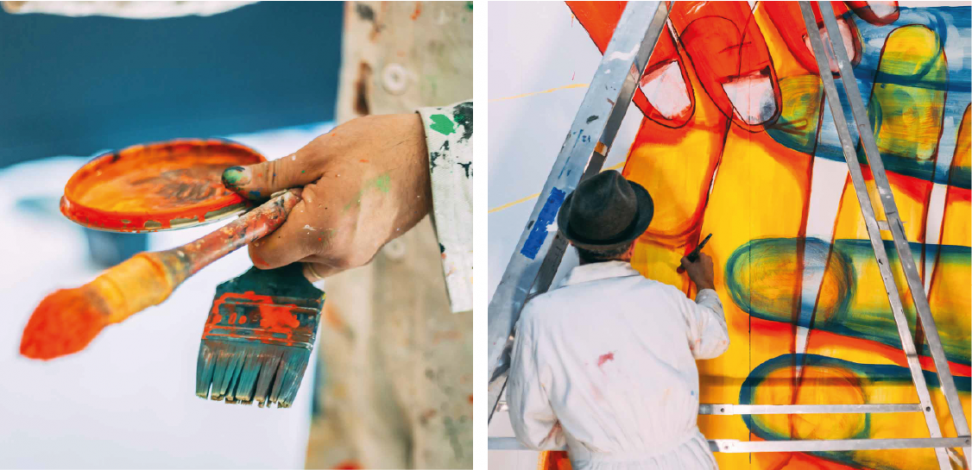

RUN’s colourful composition takes over The Fitzwilliam, 2020. Image: Paul Gonella // Strong Island Media
What was your creative process for painting the mural, My Many Hands, in the exhibition?
R: I started that process by sketching the hands on paper, using watercolour which has a natural transparency. I wanted to create an elegant piece, a pattern that could suit a tapestry or a fabric design. What was difficult was to transmit the transparency from watercolour to a thick masonry paint technique, but I like a challenge. Also, I was happy to make something that could potentially clash with the rest of the museum treasures. What I am saying is that all the art that I was surrounded by, must have had its own clash when it was made. Art is revolutionary and is radical.
“I wanted to feel the rush of something that was prohibited. That was what graffiti had to offer.”
RUN, 2020
Why do you work in such an expansive scale?
R: I love to see artefacts that are big in scale. If and when I can, I love to create something that is visible from many miles away, I once did a painting that was visible from a satellite. Sorry if this might sound egotistical, but it isn’t. Yes, I like to take over spaces, but at the end it is only for a limited time in history, and then it will fade away.
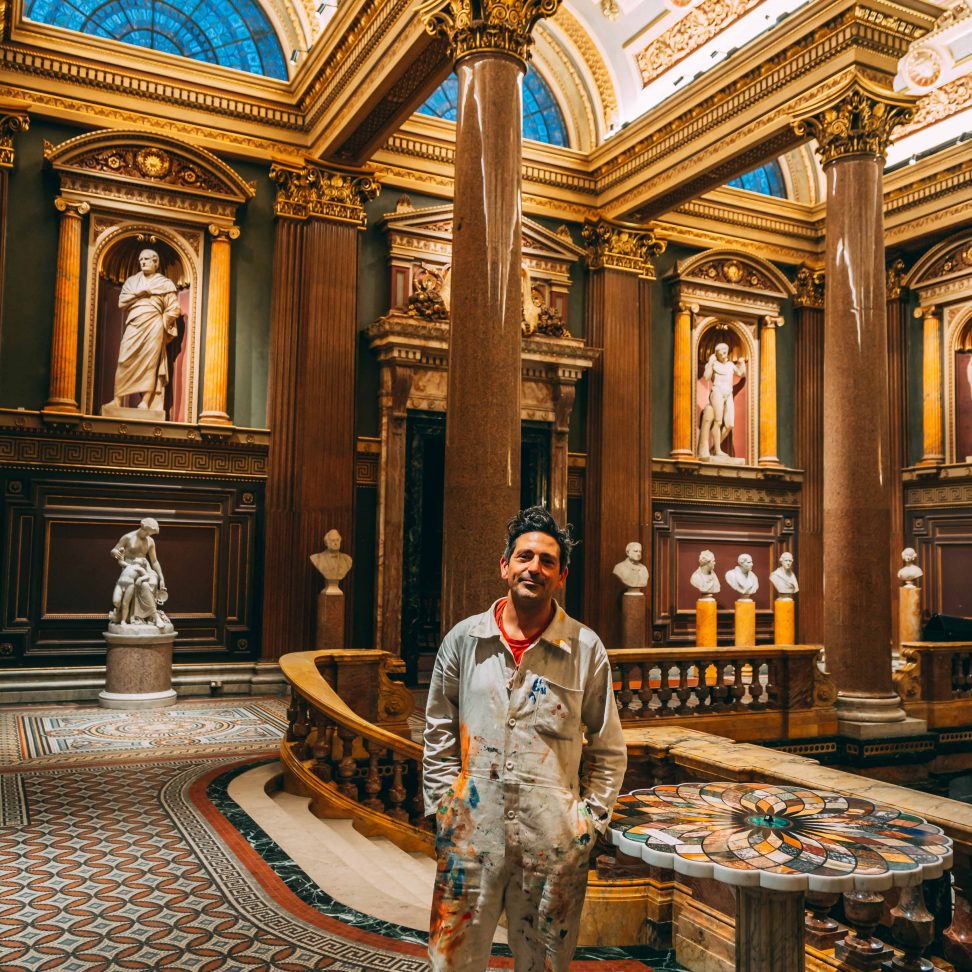

RUN soaking up the scenery inside the Fitzwilliam. Image: Paul Gonella // Strong Island Media
How has creating a mural in a classical art space, like a museum, affected your practice?
R: Has the space changed the way I approach my work at all? Not really, I don’t think it has. With due respect, a surface on the street, or an elegant and significant museum are treated the same. I always try to give the surface my best imaginary and execution. Plus, I wasn’t asked to be different for this commission. The audience may also be the same in both spaces.
Does your style echo the renaissance frescos / muralism , is your work connected to your Italian roots?
R: Being born and raised in Italy, I have been fed frescos and other classical art by Old Masters since I was born. Paintings in churches, the adverts on TV, pictures in my grandma’s house (copies of Caravaggio’s paintings for the San Luigi dei Francesi Roman church) – have all influenced me. And then even more intensely so at art school when I was teenager. I think that the difference from Italy’s art schools and British ones is that we give massive importance to the perfection of the anatomy and classical art before we can talk about any personal style of stroke. In a way, it is right that you need to know the rules before breaking them. But, it is also quite frustrating not be able to be free in your creation and explore yourself when you are young, in the first stage of ‘academic’ learning.
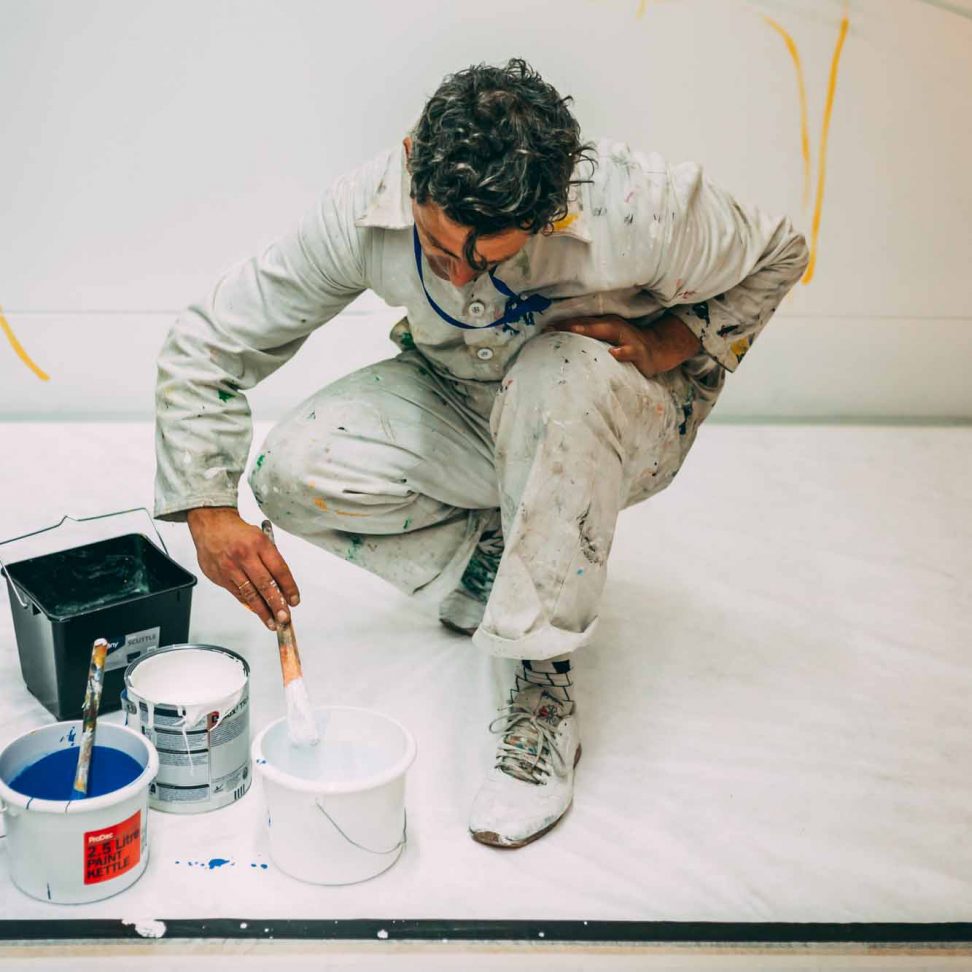

Starting off by whitewashing everything, 2020. Image: Paul Gonella // Strong Island Media
You are a keen sketcher and have created a limited edition print of one of your sketches for the show. Why is sketching important to you?
R: Sketching is really the basic thing to do. The first approach to an idea. I love sketching and I do it all the time. Sketching is to make things right and to pin down an idea or a concept.
Is there a particular object in the exhibition that speaks to your own practice?
R: Unfortunately, I haven’t had much time to explore the museum, but what I saw was the breathtaking room full of ceramics and glass. The ceramics are so beautifully done with such a variety of colours and shapes. I enjoyed the medieval tiles and the many hundreds of ceramic sculptures. I hope I can visit there soon and have the chance to do some life drawing of them.
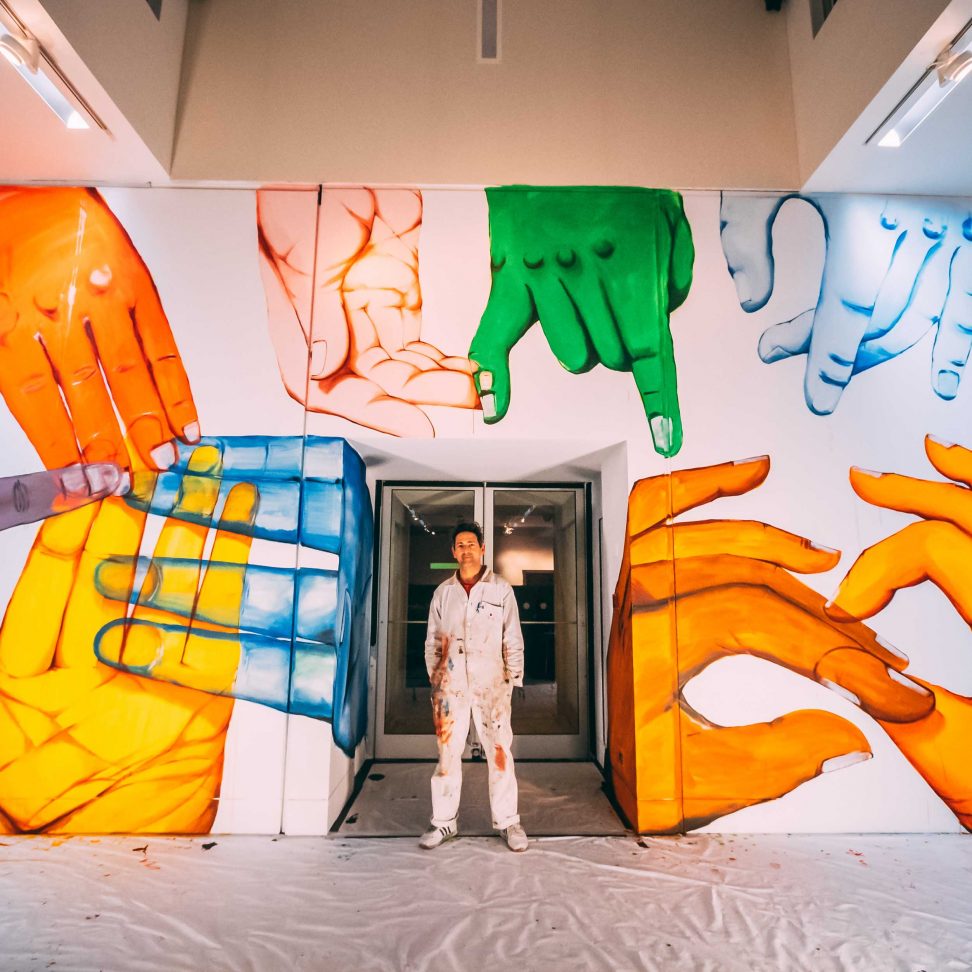

Relief! The finished piece. Image: Paul Gonella // Strong Island Media
For this exhibition you’ve created three murals (two of which can be found outside of the museum’s walls in Cambridge).What do you like most about creating art in outdoor spaces?
R: Creating an outdoor mural to me is like to accomplish and resolve a mission. There are always many issues in the process and solutions need to be found. It’s sort of like a game for big kids, perhaps it awakens the child in me. There’s also a lot of physical action involved in it’s execution, which I enjoy. I also like to think that my murals somehow become part of a real life movie set. I only make the scenography, then the people write their own story in front of the mural. I love to think that my art becomes part of someone’s story.
How did you choose the mural sites in Cambridge, why those particular areas of town?
I didn’t personally choose this location, as it was essential to choose somewhere local to the Fitzwilliam, I also guess there weren’t many choices at the moment. I have been lucky in a way because the wall at the Park Side poll is a beautiful location, surrounded by green and there is a sort of ‘magic’ junction that leads to Mill road, whichI really like as an area. Also I must say that I am new to the urban environment of Cambridge and this area looks to me very diverse and full of various ethnicities which is great.
What were the challenges of creating murals in these locations?
I guess the main challenge was the weather and the wet air. This is always a risk when painting outdoors. I need to deal with the sky, clouds, position of the wall regarding the sun and of course the seasons.
‘The Human Touch’ is on show now at Cambridge’s Fitzwilliam Museum until 3rd May 2021. Find out more here!

